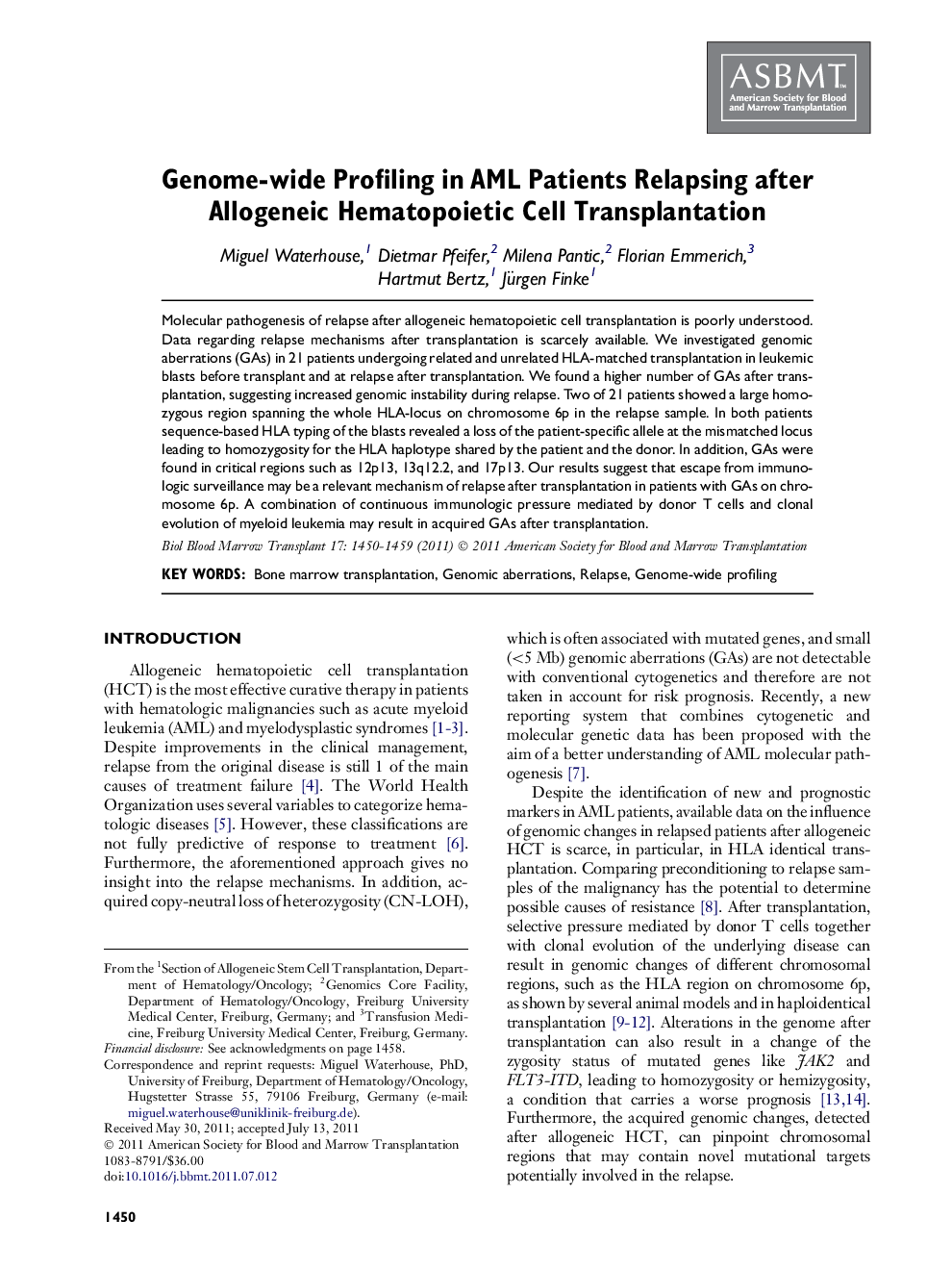| Article ID | Journal | Published Year | Pages | File Type |
|---|---|---|---|---|
| 2105466 | Biology of Blood and Marrow Transplantation | 2011 | 11 Pages |
Abstract
Molecular pathogenesis of relapse after allogeneic hematopoietic cell transplantation is poorly understood. Data regarding relapse mechanisms after transplantation is scarcely available. We investigated genomic aberrations (GAs) in 21 patients undergoing related and unrelated HLA-matched transplantation in leukemic blasts before transplant and at relapse after transplantation. We found a higher number of GAs after transplantation, suggesting increased genomic instability during relapse. Two of 21 patients showed a large homozygous region spanning the whole HLA-locus on chromosome 6p in the relapse sample. In both patients sequence-based HLA typing of the blasts revealed a loss of the patient-specific allele at the mismatched locus leading to homozygosity for the HLA haplotype shared by the patient and the donor. In addition, GAs were found in critical regions such as 12p13, 13q12.2, and 17p13. Our results suggest that escape from immunologic surveillance may be a relevant mechanism of relapse after transplantation in patients with GAs on chromosome 6p. A combination of continuous immunologic pressure mediated by donor T cells and clonal evolution of myeloid leukemia may result in acquired GAs after transplantation.
Related Topics
Life Sciences
Biochemistry, Genetics and Molecular Biology
Cancer Research
Authors
Miguel Waterhouse, Dietmar Pfeifer, Milena Pantic, Florian Emmerich, Hartmut Bertz, Jürgen Finke,
